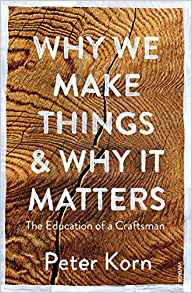This summer we are having a great time at The Loom Room France with weaving guests and non-weavers alike. The cherries have now been supplanted by the emerging plum harvest, and the swallows have now finished constructing their nest and are laying a number of eggs so we are waiting for sitting to start. It is lovely to be able to sit in our salon and see the head of the swallow sitting in her nest before she darts off to have a quick snack to build up her energies before the main bout of sitting. I have no idea how long swallows sit, so a little research is required. In the meantime, the 5 chicks that hatched last week continue to grow, wonderfully protected by their two mother hens. However, the cockerels are feeling a little abandoned!
One of the blessings of the internet is being able to keep in touch with people and organisations at the touch of a button, or through email. Several years ago, I went to Shetland with fellow weaver Kathy Schicker, met lots of lovely people and had a fabulous time with Andy Ross at Global Yell. He is super-efficient and produces a blog every week! One of the items on the blog this week is a very interesting article written by Jessica Hemmings on Textile Exhibition Strategies within the White Cube which is a topic that I have long pondered and tried different methods of showing my work. She calls it Floppy Cloth which gives you an indication of the sort of fabrics are being shown. Jessica’s article can be downloaded from the Journal of Textile: Cloth and Culture here.
It’s certainly worth a read and I hope will stimulate the way that you consider how to show your work if you choose to do that. For many people who weave scarves, this can be quite problematic, although I have seen many different creative ways of showing scarves and shawls. As I produce more sculptural pieces, I am forever thinking about methods and tools I can use to show my work in a way that it can be interacted with whilst still having it seen as an exhibition. Sometimes it is not easy to hang pieces away from the wall, or from a ceiling.
Whilst I am considering different ways of developing my three dimensional artwork, I am focusing on weaving samples for my next book. I’m quite excited about it. Stitched double cloth can frighten lots of people, especially those fairly new to weaving, but the initials ‘sdc’ can also be used to describe what I am up to using the technique – Simple Dimensional Cloth. I am trying to be scientific in my approach so I am doing a lot of sampling that will never make it into the book but might possibly be part of a monograph including all the variations and underlying research behind what will eventually be a book with, I hope, quite a wide appeal. I suspect it will take me a good year to 18 months to get anywhere near publication, but it should keep me out of mischief.
A book that I recently read on a trip to the UK is Peter Korn’s Why We Make Things and Why It Matters. I really enjoyed this book. My paperback version now has so many page corners turned down where I agree with his statements, or where I want to study his text in greater depth to ponder its meaning to me! He writes from his own experience as a maker, teacher, and organiser and is refreshingly honest about his own personal development and growth. Sometimes we are steered in the direction of ‘designer-maker’ as if that is the only option for people who want to do something with their hands and be creative, but his life and experience make for a compelling read and a re-assessing of our own creative lives. He has also drawn deeply on his own thinking about craft – his philosophy of craft, of meaning and of making – which resonates with a number of issues that most of us grapple with at some point or other of our working lives. As a maker of tactile pieces that I want people to interact with in a physical way, I could relate to his concerns of tactility although my pieces are much softer and fluid than his medium of wood. As a final note, the reading list that Korn supplies at the end of the book is worth its weight in gold for any serious student of craft.

